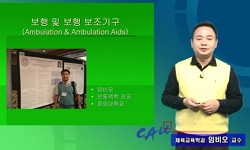Objective: This study aimed to analyze changes in upper extremity muscle activation during repeated pitching by youth baseball players and to provide foundational data for injury prevention and training enhancement by assessing the impact of fatigue o...
http://chineseinput.net/에서 pinyin(병음)방식으로 중국어를 변환할 수 있습니다.
변환된 중국어를 복사하여 사용하시면 됩니다.
- 中文 을 입력하시려면 zhongwen을 입력하시고 space를누르시면됩니다.
- 北京 을 입력하시려면 beijing을 입력하시고 space를 누르시면 됩니다.

청소년 야구 투수의 투구 수 증가에 따른 근전도 비교 분석 = A Comparative Analysis of EMG according to Increasing Numbers of Pitches in Youth Baseball Pitcher
한글로보기부가정보
다국어 초록 (Multilingual Abstract)
Objective: This study aimed to analyze changes in upper extremity muscle activation during repeated pitching by youth baseball players and to provide foundational data for injury prevention and training enhancement by assessing the impact of fatigue on electromyographic (EMG) signals. Method: The study involved 20 baseball pitchers (10 middle school and 10 high school players) from teams. Participants were selected based on their experience (minimum 5 years of pitching) and absence of injuries in the past six months. Surface electromyography (EMG) was used to measure the activity of eight key upper extremity muscles: trapezius, triceps brachii, biceps brachii, pectoralis major, deltoid, latissimus dorsi, flexor carpi radialis and extensor carpi radialis. Each participant performed fastball pitches on a mound with the pitching motion divided into six phases: wind-up, stride, arm cocking, arm acceleration, arm deceleration, and follow-through. Mixed-design analysis of variance (Mixed ANOVA) was used to evaluate changes in muscle activation, with statistical significance set at p<.05. Results: As the number of pitches increased, muscle activation across the upper extremity generally decreased, reflecting fatigue-related reductions in neuromuscular coordination. Significant reductions were observed in the trapezius and latissimus dorsi during the wind-up and stride phases and in the extensor carpi radialis, flexor carpi radialis and triceps brachii during the arm cocking and acceleration phases. While high school players demonstrated more stable muscle utilization due to efficient pitching mechanics, both groups experienced noticeable decreases in muscle activation in specific phases, indicating variability in fatigue accumulation based on age and skill level. Conclusion: Youth baseball pitchers exhibited overall reductions in muscle activation during repeated pitching, highlighting the impact of fatigue on inefficient muscle use and increased injury risk. Developing tailored training programs that address age and skill-specific fatigue management and promote balanced muscle development is essential. Such approaches are expected to improve pitching mechanics, prevent injuries, and enhance the performance of youth players.
동일학술지(권/호) 다른 논문
-
시각 정보가 양손 힘 조절 능력 및 운동단위 활성 패턴에 미치는 영향
- 한국운동역학회
- 이한얼
- 2025
- KCI등재
-
- 한국운동역학회
- 김예림
- 2025
- KCI등재
-
성인 여성의 만성 발목 불안정성 유무에 따른 한발 전방 점프 착지 시 동적 자세 조절 능력 차이 분석
- 한국운동역학회
- 정형도
- 2025
- KCI등재
-
지적 장애인의 자세 안정성에 대한 성별 차이: 정적 균형 평가(파일럿 연구)
- 한국운동역학회
- 홍인표
- 2025
- KCI등재




 ScienceON
ScienceON KISS
KISS


